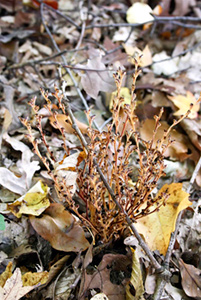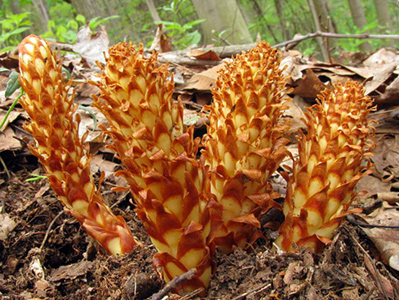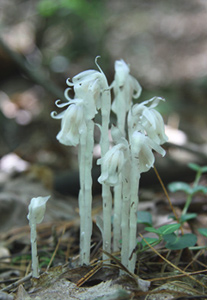That’s right, there are true plants that lack chlorophyll and live their lives as consumers. In other words they are not autotrophs or producers. Most of these are true flowering plants, Phylum Anthopytha (once called Angiosperms). These non-green flowering plants are parasitic on other plants and rarely on fungus. Here in Georgia, we have a few common examples: Beechdrop (Epifagus virginiana) which is parasitic on the roots of the American Beech, Squaw Root (Conopholis americana) which parasitic on oaks and beech, and finally Indian Peace Pipe or Ghost plant (Monotropa uniflora) which needs both a tree and a fungus in which to parasitize.
 |
 |
 |
| Beechdrop | Squaw Root | Indian Peace Pipe |
Most of the plant remains underground with only the flower emerging above ground in order to allow pollination. The Indian Peace Pipe pictured here was found in Gilmer County, Georgia. Although it resembles a fungus, it is indeed a plant which lacks chlorophyll (achlorophyllous).
